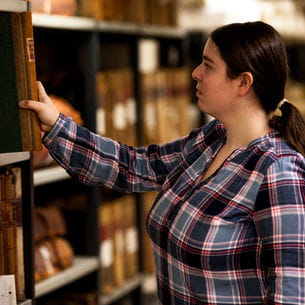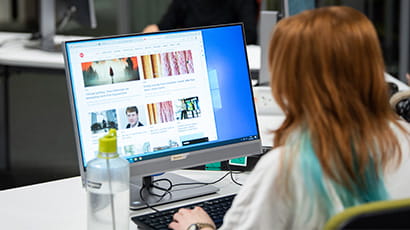How to cite a work
Introduction
You are expected to acknowledge the books, journal articles and other sources of information that you use when preparing and completing your university work. This is done by briefly referring to (citing) the sources of information in the text of your work, with a list of corresponding references at the end.

Ways to cite a work
Refer to their work
When referring to another author's work, include their name and year in brackets.
Example: In a recent study (Handy, 1987) management is described as...
If you are quoting another author's work, you will need to include a page number. See quote an author's work
Refer to multiple works at the same time
If you need to cite more than one source at the same time, list the sources, separated by a semi colon, citing the most recent reference first.
Example: (Hawkes, 2012; Butters, 2011)
Refer to multiple works of an author published in the same year
If you need to refer to more than one source at the same time where the author and date are the same, use lower case letters, in alphabetical order, following the year of publication:
Example: Jones (2012a) provides a useful overview of evidence based practice. This has been further refined in her latest book (Jones, 2012b) which considers the practice in an international context.
In this case, the reference list at the end of your work would look as follows:
Reference list example:
Jones, P. (2012a) Evidence Based Medicine. Oxford: Blackwell Publishing.
Jones, P. (2012b) International Evidence Based Medicine. Bristol: Redcliffe Press.
Refer to multiple works of an author published in different years
Note the most recent first in both the citation and the reference list.
Refer to a work you haven't read that has been referred to in another work that you have read (secondary referencing)
You may wish to cite a work you haven't read that has been referred to in another work that you have read.
In this case you should cite the primary source (the unread work) and the secondary source (the read work) in your text.
However, in your reference list/bibliography, you should just reference the secondary source.
Example: Rowley (1991) cites the work of Melack and Thompson (1971), who developed the McGill Archaeology questionnaire.
Example: Melack and Thompson (1971, cited by Rowley 1991) developed the McGill Archaeology questionnaire.
Example: Rowley (1991, citing Melack and Thompson 1971) refers to the McGill Archaeology questionnaire.
In these examples, the list of references would only contain the work by Rowley.
Recommendation: secondary referencing should be avoided if at all possible. The author may be citing the original reference because of their own interpretation of its relevance, possibly in quite a different context. We recommend you read the original source for yourself to ensure its relevance to your particular context.
Refer to a work you have previously cited
You must fully cite a source every time you refer to it.
UWE Bristol Harvard does not use ibid. to refer to a previously cited item.
Ask a librarian
Library staff are happy to advise on referencing, however, they are unable to proofread academic work.
Ask a librarian with 24/7 live chat. You can also contact the Library by email or phone.
Contact us
Library study skills support
There are a number of ways you can get support from the library, such as talking to us at helpdesks, using our online chat service, booking 1:1s or attending workshops.
Library study skills supportYou may also be interested in

Study skills
Support to help you study, including referencing, academic writing, research skills, time management, reading, plagiarism advice, and IT.

Reading and writing
Improve your academic literacy, English language skills, and learn about plagiarism and copyright.

Research skills
Online advice and tutorials to help you develop your research skills.
